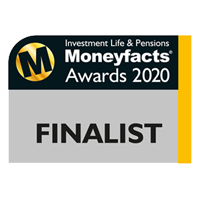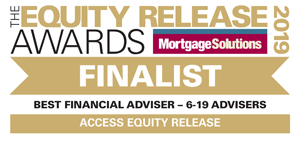Awareness of equity release is growing as more and more people approach retirement age in an asset rich but cash poor position.
However, there is still a lot of confusion about the different products available and the terms used. For example, we know some people believe that equity release is where you sell and rent back your home, but in fact the two are completely different.
So let’s clear things up by taking a closer look at some of the phrases and products you’re likely to come across.
What is equity release?
‘Equity release’ is used to describe products that allow home owners over the age of 55 to access their equity without having to move out of their property. ‘Equity’ is the value of your home, minus any mortgage or loan secured against it.
There are two types of equity release product available – a lifetime mortgage and a home reversion plan. All firms offering these equity release products must be authorised by the Financial Conduct Authority (FCA) and consumers must take expert advice from specially qualified advisers first. You can’t buy these products direct from the providers.
Access Equity Release is FCA authorised and also a member of the Equity Release Council. Our expert advisers are fully qualified and always available to answer your questions about equity release.
What is a lifetime mortgage?
A lifetime mortgage is a loan secured against your home, just like a normal mortgage. It means you can free up some of the equity in your home but continue to live there.
You can choose to receive your released equity as a lump sum or in regular payments.
You retain full ownership of your home and the loan does not need to be paid back until the property is sold after you die or go into long-term care.
The interest on the mortgage is either added to the loan through your lifetime, known as interest roll-up, or you can opt to pay back some or all of the interest every month.
Releasing equity will reduce the value of your estate, but there are plans available which will protect an amount for your family to inherit.
To qualify for a lifetime mortgage you must be over 55 and the home owner. If you are taking out a joint plan with your partner, the age of the youngest borrower must be at least 55.
Lifetime mortgages are by far the most common type of equity release.
What is a home reversion plan?
A home reversion plan is where you sell all or part of your home to a third party in return for a cash lump sum, regular income or a combination of both.
You can continue to live in your home for as long as you want to under a lifetime lease. There is no interest and no monthly repayment because there is no loan involved.
For a home reversion plan you must be at least 60 years old.
Home reversion is far less popular than lifetime mortgages.
If you would like to receive a lump sum, want to stay in your home and don’t need anyone to inherit the full value of the property, a home reversion plan might be appropriate for you.
But you must remember and plan for the fact that you will no longer own your home, or only own part of it.
Why is there confusion?
Many people believe that equity release is where you sell your home and then rent it back. In fact, such schemes are not equity release at all.
In most cases, the sale-and-rent back (SRB) company will not guarantee occupancy for life. Instead, you pay market rent for a fixed period of time, which must be a minimum of five years. After that, your tenancy is not secure and you could face an increase in rent.
The FCA does regulate SRB but has found serious problems with a number of firms in the past. Always seek legal and financial advice if you are considering one of these schemes.
The term “lifetime lease” is also used by various companies which offer a home-for-life arrangement to people who want to move house.
Under these plans, you pay the firm a discounted price to live in a property for your lifetime without rent or mortgage payments.
It can seem like an appealing option if you want to move into a new property later in life. Many people use the proceeds from the sale of their old home to buy their “dream” retirement property.
But under these schemes you do not own or even partially own the new home. You simply pay for the right to live there for your lifetime. The company retains full ownership and reclaims the property when you die or go into long-term care.
These schemes are not regulated by the FCA.
There have been cases reported in the national press involving people who feel they were mis-sold or badly advised in regards to these types of lifetime lease.
Why is equity release different?
The key differences between equity release and sell-and-rent-back are:
- Security of tenure. Equity release usually gives you the right to live in your home for life. SRB only guarantees a fixed-term tenancy.
- Ownership. With equity release you retain either full ownership of your home under a lifetime mortgage or retain part of it under a home reversion plan. SRB sees your property sold in its entirety.
- Rent payments. With equity release, you not have to pay rent. Under SRB schemes you pay market rate rent to live in the property.
The key difference between a lifetime lease under a home reversion plan and a lifetime lease under a home-for-life scheme is:
- Regulation. Equity release via a home reversion plan is regulated by the FCA and you must be offered advice before going ahead. Home-for-life schemes are not regulated.
We recommend you seek professional advice whenever you are considering your options for your property. The expert advisers at Access Equity Release can help you find a solution that is suitable for your circumstances.
Access Equity Release is a trading name of Your Mortgage Decisions Ltd which is authorised ad regulated by the Financial Conduct Authority, FRN 459763














